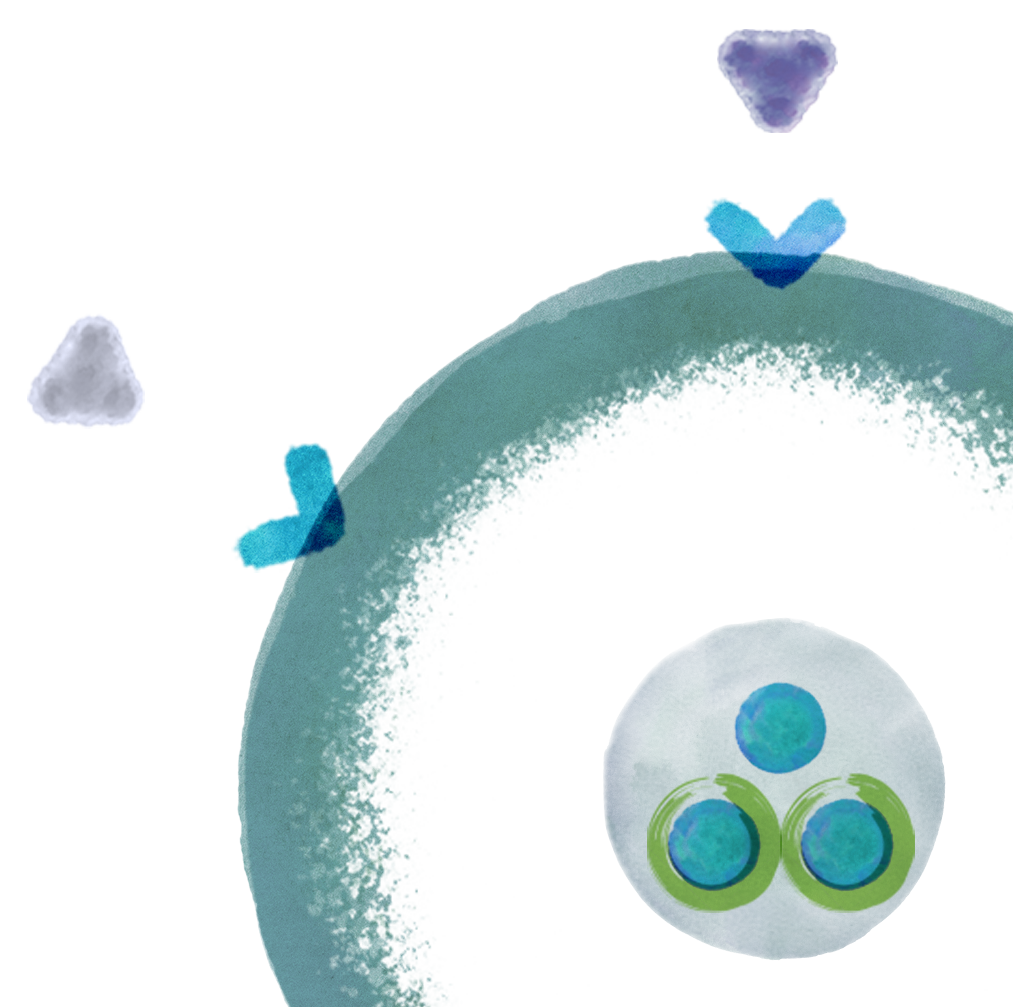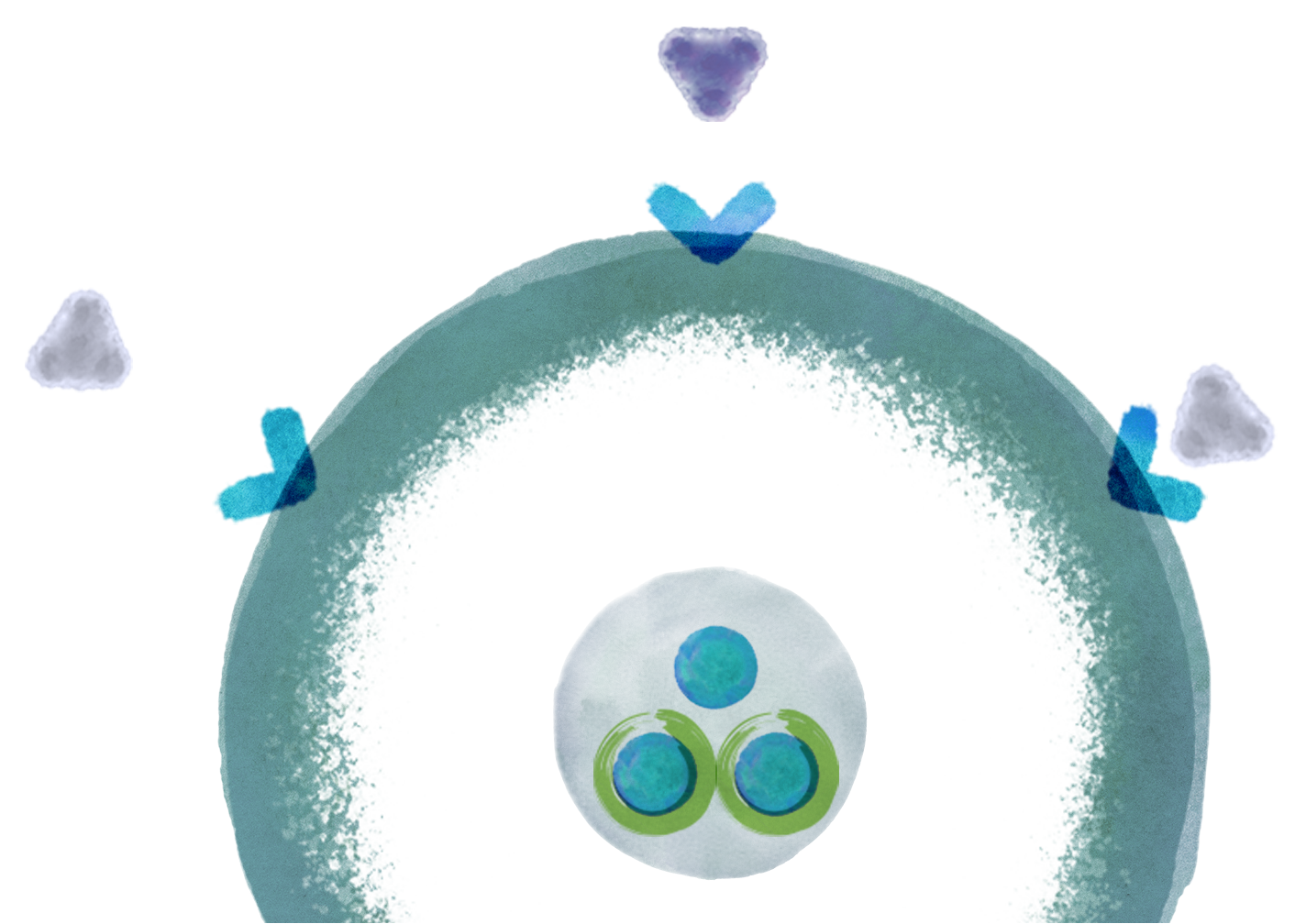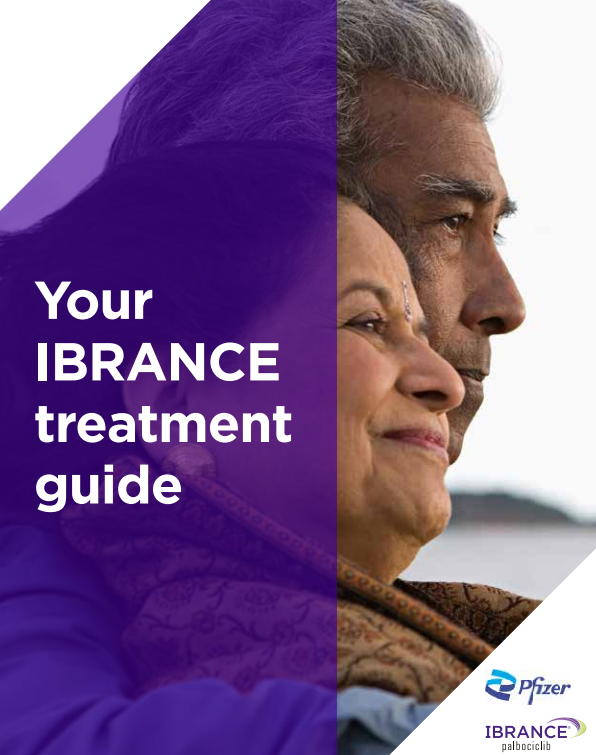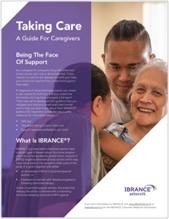So, what is IBRANCE?
IBRANCE is a breast cancer treatment that’s unlike traditional chemotherapy.10 It is a targeted therapy known as a CDK4/6 inhibitor. Taken in combination with certain hormonal therapies,1 IBRANCE helps to slow cell growth and division in hormone receptor positive (HR+), human epidermal growth factor receptor 2-negative (HER2-) advanced breast cancer.1
IBRANCE is now funded (certain criteria apply) for New Zealand women with a common and incurable type of breast cancer.11
Which Type Of Breast Cancer Is IBRANCE For?1
IBRANCE is for women with hormone receptor positive (HR+), human epidermal growth factor receptor 2-negative (HER2-), HER2- advanced breast cancer— or HR+/HER2- breast cancer that has spread to other parts of the body.1
Hormone receptor positive (HR+), HER2- is the most common subtype of breast cancer.12 If your subtype is estrogen receptor positive (ER+) and/or progesterone receptor positive (PR+), you can be treated with hormone therapies, like an aromatase inhibitor* or fulvestrant, that reduce the effects of hormones.3,4
If your subtype is HER2-, your cancer cells have less HER2 protein expression,13 so you won’t be given HER2 targeted therapy.3
*Aromatase inhibitor is a class of therapy that includes: letrozole, anastrozole and exemestane.3

How IBRANCE Works
Slowing The Progression Of Advanced Breast Cancer1
IBRANCE is a targeted therapy known as a CDK 4/6 inhibitor, which is unlike traditional chemotherapy.10 IBRANCE works to slow down cell growth in both healthy and cancer cells.1 This helps slow the progression of cancer, but it can also cause side effects.1 Please click here to learn more.


Learn How IBRANCE & Hormonal Therapies Work Together
The video below shows how IBRANCE and hormonal therapies bring the power of two therapies together to help delay the progression of a certain type of advanced breast cancer.1
Starting a new treatment can be overwhelming. You—and those who care for you—may have questions, and that’s to be expected. This video can help explain how IBRANCE works as a treatment for a certain type of advanced breast cancer.
Advanced breast cancer is breast cancer that has spread to other parts of the body, such as the bones, liver, lungs, and brain.7
Let’s now take a closer look at the role hormones play in the body as well as how both IBRANCE and hormonal therapy work.
Hormones are substances that act as chemical messengers, traveling through the bloodstream to help perform activities specific to cells and organs.14
Estrogen and progesterone are two such hormones that occur naturally in the body.14 These hormones attach to hormone receptors in order to help promote normal cell growth and function.14
Hormone receptors are proteins found within and on the surface of cells, including breast cells.14 The binding of hormones to the receptors is like flipping an on-switch for the activity and function of the cell.14
When hormones like estrogen and/or progesterone bind with hormone receptors on cells, they can promote the growth of certain breast cancers.14
The breast cancer we are focused on here is known as hormone receptor positive or (HR+), human epidermal growth factor receptor 2-negative or (HER2-) advanced breast cancer. Or, more simply put, HR+/HER2- advanced breast cancer.
In HR+, HER2- advanced breast cancer, the presence of estrogen and/or progesterone and hormone receptors can cause proteins known as CDK 4 and CDK 6 to become too active inside the cell.15 That overactivity can cause the cell to lose its ability to regulate its growth and division.15
This can lead to the production of many cancerous cells that can move to different areas of the body. Blocking the ways that a cell grows and divides can slow the progression of certain breast cancers, including HR+/HER2- advanced breast cancer.15
This is where IBRANCE can play a role.
IBRANCE is taken in combination with hormonal therapy to help delay the progression of advanced breast cancer.1
IBRANCE works inside the cell to disrupt the activity of the proteins CDK 4 and CDK 6, which can keep both healthy and cancer cells from dividing.1
Hormonal therapy works outside the cell to block or reduce the binding of hormones with hormone receptors to prevent the cells from growing and dividing.16
By working together, IBRANCE and hormonal therapy can help delay the progression of HR+/HER2- advanced breast cancer.1
Talk to your doctor if you have any additional questions about IBRANCE. Information can also be found throughout www.IBRANCE.co.nz.
Side Effects1
Like all medicines, IBRANCE may cause side effects for some people. It is important you talk to your healthcare team if you experience side effects of any kind, even if they are not listed below.
THE MOST COMMON SIDE EFFECTS YOU MAY EXPERIENCE WITH IBRANCE
The most common side effect with IBRANCE is a low white blood cell count, this is called neutropenia.1
Other very common side effects include: tiredness, nausea (feeling sick) or vomiting, diarrhoea, sore mouth, or lips, or tongue, hair loss, loss of appetite, nose bleed, skin rash, change in sense of taste, blurred vision and increased tearing or dry eyes.17
Not all of the possible side effects are listed here.17 For more information, talk to your doctor, nurse, pharmacist or click here to learn more.17
MORE SERIOUS SIDE EFFECTS
Tell your healthcare team immediately or go to Accident and Emergency if you notice any of the following:
• infection, fever, chills
• mouth ulcers, sore throat, sore gums
• lack of energy, pale skin, shortness of breath
• weakness, dizziness, rapid heart rate
• bleeding or bruising more easily than usual17
The above side effects may be serious and you may need urgent medical attention or hospitalisation.17


